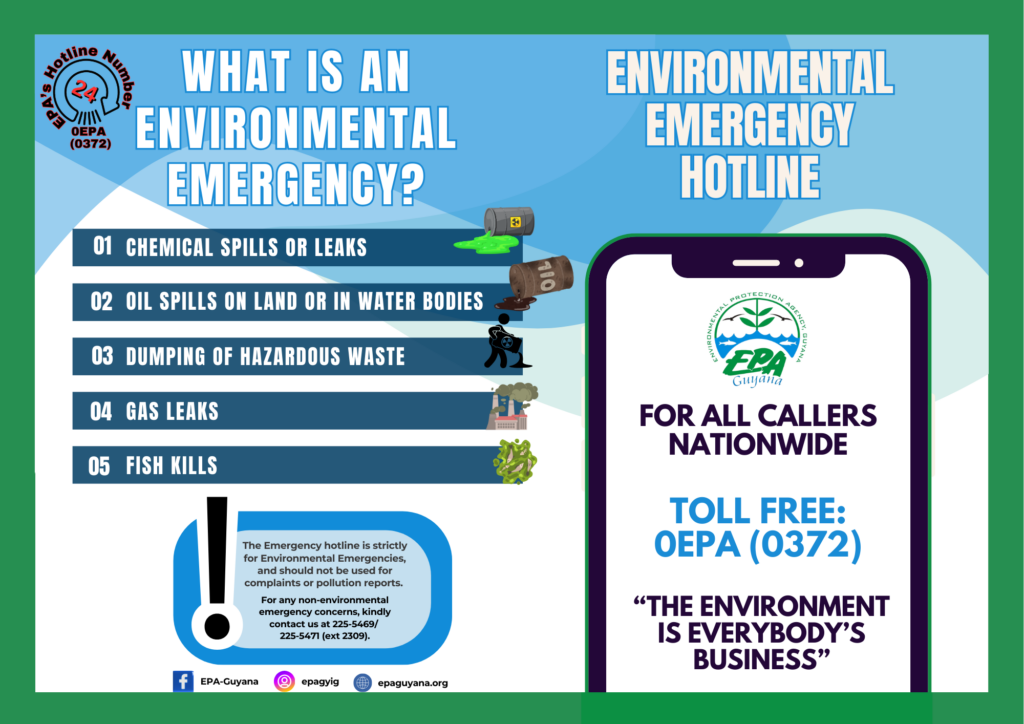The Environmental Protection Agency (EPA) wishes to address several misconceptions and inaccuracies being pedalled by persons, particularly select political, legal and technical pundits, regarding the EPA’s modification of the Environmental Permit for the Liza 1 Development Project, Offshore Guyana.
First and foremost, the EPA takes this opportunity to clarify that the modification was pursued in strict accordance with the legislation due to the intermittent periods of flaring conducted by Esso Exploration and Production Guyana Limited (EEPGL) due to technical issues offshore Guyana. Prior to its modification, the Permit prohibited ‘Routine Flaring’; however, process upsets, equipment failures and maintenance events are not considered ‘Routine Flaring’ in the Oil and Gas Industry. Such events were not specifically addressed or regulated in any way by the original Permit.
Further, the original permit only required EEPGL to notify the EPA for flaring sustaining a volume of at least 10 MMCFD and lasting at least five (5) days. However, the modified Permit now includes specific timelines for detailed instances of flaring, and notification and approval processes, during which the company must justify its reason(s) for flaring and the EPA reserves the right to reject this request if unjustified.
The timelines prescribed by the Modified Permit are consistent with the US Code for Federal Regulations which establishes that flaring may not exceed 48 hours without seeking approval. Further, international benchmarking shows that the initial start-up period averages approximately 90 days, however, the modified permit specifies a more conservative start-up period of 60 days, below the average international benchmark. This is also consistent with the recently issued Payara Environmental Permit.
Any flaring in excess of these timelines requires the company to pay for the emission of Carbon Dioxide equivalent (CO2e) at the rate of US$30 per tonne of CO2e. To this end, the EPA was guided by the Polluter Pays Principle, which was prescribed by the Environmental Protection Act in 1996, but has served as a universal principle of environmental management even prior to this, and has continuously developed in its interpretation and applicability as a result of national and international jurisprudence, customary law, and international environmental laws and conventions.
Consequently, the EPA utilised carbon pricing benchmarking to determine this payment, so that the monies acquired from the pollution events could be used for Supplemental Environmental Projects (SEPs). Moreover, the determination of US$30 per tonne of CO2e was a result of rigorous research and is consistent with introductory prices for CO2e implemented by developed countries such as Canada.
In determining the volume of CO2e emitted, Condition 3.10 of the modified Permit specifically prescribes multiple methodologies, including but not limited to:
- American Petroleum Institute’s (API) Compendium of Greenhouse Gas Emissions Methodologies for the Oil and Gas Industry; and
- Intergovernmental Panel on Climate Change (IPCC) Guidelines for National Greenhouse Gas Inventory.
The EPA categorically rejects and opposes all unfounded and baseless remarks about the capabilities of its staff to utilise and apply these methodologies.
Additionally, the EPA notes discussions around the recoverability of the payments for CO2e emissions. While the EPA in its role as an environmental regulator does not typically concern itself with the contractual arrangements between the Ministry of Natural Resources and EEPGL, during discussions with the company regarding the modifications, it was indicated that any such payments would not be recoverable against the Government of Guyana.
As such, the EPA views the modification, not as creating any additional adverse effects, but as a means of implementing more specific flare management conditions that are consistent with industry practice in order to regulate and/or deter periods of flaring.
Members of the public are advised that some amount of flaring is to be expected for maintenance events, process upsets and equipment failures given the complexities of oil and gas production in the offshore environment. The EPA has pursued modification to ensure that there are environmental safeguards and deterrent mechanisms to address any prolonged periods of flaring which may pose risks to the environment.
However, the EPA wishes to assure that it will continue to work assiduously toward national standards which specifically address flaring, and following this modification, the EPA has commenced the process of developing specific flaring targets for the upcoming renewal of the Liza 1 Environmental Permit (June 01, 2022) as well as other upcoming EPEGL projects offshore Guyana.


